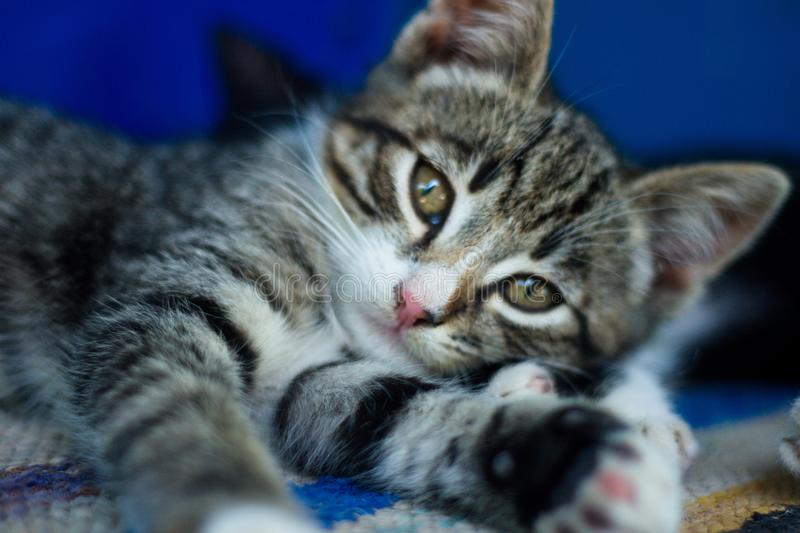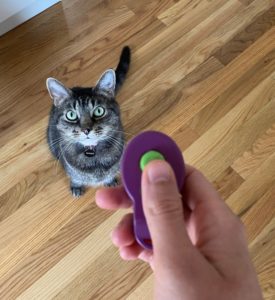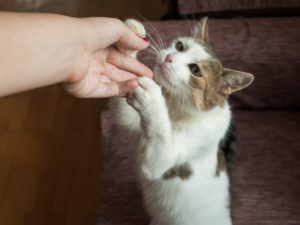Can Cats Lie Down on Cue?

Curious as to whether or not YOUR favorite feline can be taught to lie down on cue?
According to pet trainers, it’s, paws down, one of the easiest behaviors a cat can learn. As a matter of fact, the more relaxed YOU are, the more relaxed your kitty will be, thereby affording you the optimum opportunity to positively reinforce this behavior.
Choose a location where your cat’s already comfortable curling up or sprawling out, whether it’s a couch, your bed or her own preferred perch. To make the spot even more appealing, cover it with an especially soft rug or fleecy blanket. Each training session should be brief – from one to five minutes – and to hold her attention and keep her engaged, always offer her ample rewards throughout.
Begin by marking and rewarding her instinctive tendency to lie down. As soon as she starts moving into a resting position, say “down” and mark it either with a word, such as “good”, or with the click of a training clicker, followed promptly by a reward, i.e. a high-value treat. Not only does the marker help your kitty learn what the desired behavior is, the reward teaches her to associate good things with that behavior.
mark it either with a word, such as “good”, or with the click of a training clicker, followed promptly by a reward, i.e. a high-value treat. Not only does the marker help your kitty learn what the desired behavior is, the reward teaches her to associate good things with that behavior.
If she seems confused by receiving a reward for a behavior that’s natural to her, don’t be discouraged. The key is repetition and consistency, building on her ability to learn the connection between the desired behavior and the resulting reward. By coupling the word “down” with the action of lying down, you’re teaching her to associate one with the other, followed, of course, by that all-important treat. The more you repeat this sequence, the sooner your kitty will learn that lying down in response to the word “down” is more than worth her while!
Up for a greater challenge? Use a “lure” as a way of teaching your kitty to lie down. Whether it’s a treat held in your closed hand, a tiny ball or a small crinkle toy, hold it in front of and slightly below her when she’s perched higher up on a chair or a cat tree, for example. As she moves to investigate, say “down” and mark it either with a word, such as “good” or with the click of a training clicker, and reward her with a treat whether she only bends slightly or actually lowers her chest to the surface of the cat tree or chair. Repeat the process until she’s fully resting in the desired down position.
Once she’s mastered this, switch from holding the “lure” where she can see it to holding it in your closed palm. This will teach her to follow your hand and not the “lure.” Continue rewarding her with a treat each time she successfully lies down, but remember to give her the treat with your other hand!
Your ultimate goal is to use only the hand signal preceded a second or two earlier by the word “down.” Remember the old axiom: practice makes perfect or, in this case, purr-fect? With ongoing practice – and paw-lenty of patience on your part — your kitty should soon start anticipating the verbal cue “down” and move into the down position as soon as she hears it.
Whichever training strategy you choose, increase the time your cat remains in the down position by intermittently rewarding her with a treat. Then, at the end of each session, use a release word such as “free” as a signal to her that she is literally being freed from lying down.


